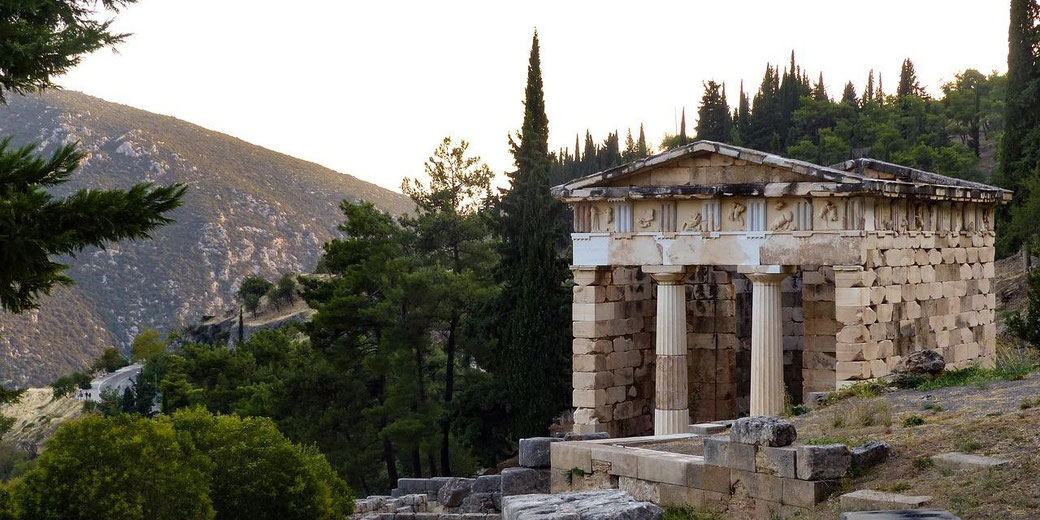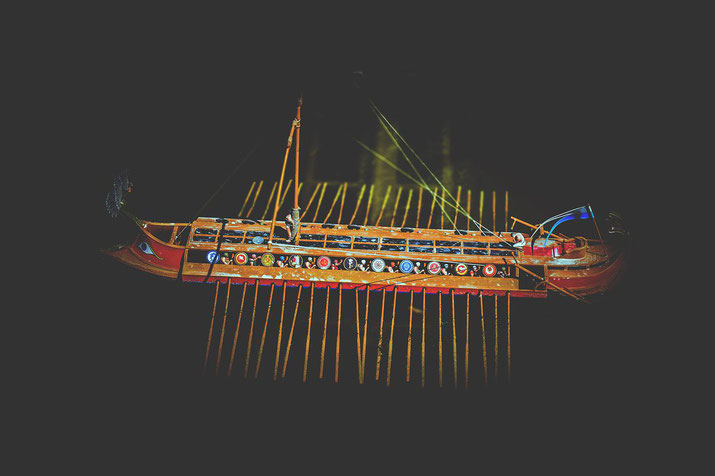How Xerxes I and Themistocles prepared for war

In the early 5th century BC, the Greek city-states faced a new and daunting threat from the mighty Persian Empire following their stunning victory at the Battle of Marathon.
Just ten years later, in 480 BC, Xerxes I, the powerful ruler of Persia, sought to avenge his father's defeat and conquer Greece.
During these years, both sides prepared for the inevitable clash: Persia amassed one of the largest armies in their history, while the Greeks, under the strategic guidance of Themistocles, scrambled to fortify their defenses and expanded their navy.
Under the personal leadership of Xerxes himself, a massive invasion force set out from Persia, determined to finally subdue the Greeks.
Death of Darius I
In October of 486 BC, King Darius I of Persia died suddenly from poor health. His death was a shock to the Persian Empire, as he had been a strong and effective leader.
He was succeeded by his son Xerxes I, who was around thirty years old at the time.
Xerxes' first order of business was to deal with the rebellions that had sprung up in Egypt and Babylonia.
He quickly put down these rebellions and solidified his control over the Persian Empire.
With this done, he turned his attention to Greece. Mardonius (who was his cousin and brother-in-law) encouraged him to renew the campaign against Greece.
It appears that Mardonius' intentions were personal in that he intended to dominate the conquered country as a satrap following Xerxes' triumph.
Preparations for war
So, Xerxes began his preparations in 484 BC for an invasion of Greece. He assembled a massive army.
The estimates of the size of Xerxes' army vary widely, with the figure of two million being provided by Herodotus.
But, most modern scholars consider this to be an exaggeration, and the actual number was likely significantly lower, with estimates ranging from 100,000 to 300,000.
Also, Xerxes built a fleet of ships to transport his army across the Aegean Sea.
In order to finance his war effort, Xerxes imposed heavy taxes on his subjects. This caused unrest among the people and helped to rally support for the Greeks.
After four years of planning and preparations, he was finally ready to launch his attack.
Early career of Themistocles
While Xerxes was busy with his preparations, the Greek world saw the rise of one of its most important leaders.
Themistocles was an Athenian general and politician who had fought in the Battle of Marathon in 490 BC.
He was not born into an aristocratic family, but a more middle-class one. Despite these origins, he was able to rise to dominance through the democratic political system in Athens.
In 493 BC, he became archon, the chief magistrate in Athens, establishing the port town of Piraeus and constructing its fortifications.
He made it the most important naval base in Greece. Realising Persia would try to invade again after their loss in 490 BC, Themistocles believed that their best chance to defeat the invaders was to control the seas.
In 483 BC, a new seam of silver had suddenly been discovered at the mines of Laureion, near Athens.
A great debate broke out in the Athenian Assembly over what to do with this new wealth.
On one side of the debate was Aristides, who had the support of the traditional aristocracy.
He argued that the new wealth should be shared out equally among the people. Each one would receive around ten drachmas.
However, Themistocles argued that the funds should be combined and be used to build a larger navy.
It seemed that Aristides' proposal would be adopted, but Themistocles was able to manipulate the people through an astute implementation of propaganda, to get the Athenians to ostracise Aristides in 482 BC.
With his political rival now gone, Themistocles' idea won support and the money was used to build 200 new triremes.
Creation of the Hellenic League
In 481 and 480 BC, Athens and Sparta held a series of congresses at the Isthmus of Corinth.
At them, they sought to find a consensus on the best strategy to defend Greece in the event of Xerxes' invasion.
Thirty-one Greek states agreed to form an alliance, which was called the Hellenic League.
Many Greek city-states in the north chose not to join the League as they feared they would suffer the most from a Persian attack which would march through their territories.
The League realised that many of these northern states would be tempted to ally themselves with Persia in the hope of avoiding devastation.
In response, the Hellenic League agreed to fine any city that sided with Persia (known as ‘medising’).
Such fines involved the confiscation of the city's wealth and handing over a tenth of it to the shrine at Delphi.
Sparta was appointed to command both the League's armies and navies. King Leonidas of Sparta was in charge of the land forces, while Eurybiades was in command of the ships.
Athens had sought command of the navy, as they provided most of the ships for the League, but the other city-states preferred Sparta's command instead.
Why did so many Greek cities side with the Persians?
Cities in northern Greece, such as Thessaly, found themselves vulnerable to Persian attack.
In particular, their geographical proximity to Persia made them immediate targets and exposed them to significant risk.
Alos, the overwhelming size and power of the Persian forces led many to believe that resistance would be futile.
As a result, they aligned with Persia, which appeared to be a pragmatic choice for survival.
In Boeotia, cities like Thebes also decided to medise. Thebes, having long-standing rivalries with other Greek city-states, saw an opportunity to enhance its power through Persian support.
By aligning with Persia, Thebes hoped to gain favor and leverage against its adversaries.
This decision reflected the complex political landscape of Greece, where local conflicts influenced broader alliances.
Moreover, the Persian promise of autonomy and protection enticed several cities to switch allegiances.
In Thrace and Macedon, local rulers also decided to medise. The vast Persian Empire offered them a chance to maintain their rule under its protection.
They recognized the benefits of aligning with a powerful empire, which included economic incentives and military support.
With the Persians offering generous terms, these regions opted for a safer, more prosperous future under Persian oversight.
The Delphic Oracle's 'wooden walls'
In 481 BC, when the Greeks heard of Xerxes' imminent invasion of Greece, the Athenians sent messengers to the oracle at Delphi to seek advice about how best to prepare.
In response to their request, the oracle gave them a prophesy that the 'wooden walls' of Greece would save them from Xerxes' invasion.
Themistocles interpreted this to mean that their navy was their best hope for victory, and he used this prophecy to rally support for his cause.
Themistocles proposed a strategy for the land forces where they specifically chose terrain for potential battles which would restrict the movement of large numbers of troops, such as mountain passes and narrow waterways.
He argued that this would be the best hope of nullifying the superior numbers of the Persian forces, both at sea and on land.
The League agreed with this proposal and adopted it for the upcoming campaign.
Then, it was decided to send a force of around 10,000 hoplites north, to the Vale of Tempe in Thessaly, to take up a defensive position.

Xerxes' march to Greece
In 481 BC, Xerxes set out from Sardis with his army and fleet. He crossed the Hellespont (now known as the Dardanelles) by building two temporary bridges across the ships of their fleet.
The construction of this bridge reportedly involved using 674 ships to which were bound together in long lines, which would have been a remarkable feat of engineering for the time.
Once safely in Europe, Xerxes then continued his march through Thrace and Macedonia.
When his forces reached Mt Athos, Xerxes ordered his soldiers to dig a 4-kilometre man-made canal through the land so that his fleets could avoid the stormy seas that threatened them.
This delay gave the Greeks more time to prepare for his arrival and to scout out the strength of the Persian forces.
When King Leonidas realised the overwhelming numbers of Xerxes' army, he decided to retreat south so that they could block the narrow passage of Thermopylae.
This would be the place of one of the greatest battles in all of Greek history: the Battle of Thermopylae.
What do you need help with?
Download ready-to-use digital learning resources
Copyright © History Skills 2014-2025.
Contact via email
With the exception of links to external sites, some historical sources and extracts from specific publications, all content on this website is copyrighted by History Skills. This content may not be copied, republished or redistributed without written permission from the website creator. Please use the Contact page to obtain relevant permission.





